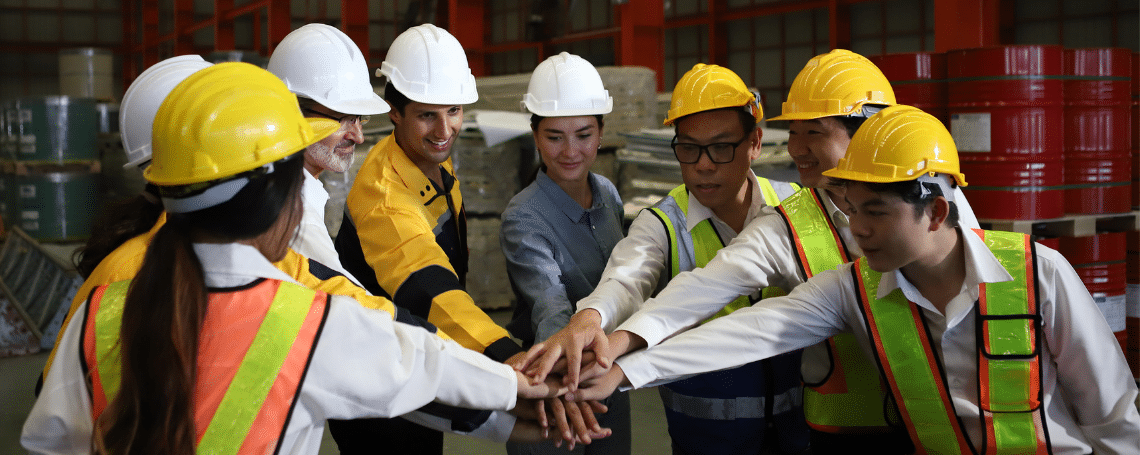In the fast-paced world of manufacturing, where every shift counts, high employee turnover is a costly problem with far-reaching consequences. A short-staffed production line with deadlines looming and quality slipping can quickly become a significant challenge for any organization.
High turnover rates in manufacturing often lead to substantial financial and operational costs. These include recruitment expenses, onboarding efforts, and productivity losses as new hires struggle to get up to speed. Inexperienced employees often mean more defects, safety risks, and even customer dissatisfaction.
Less experienced workers might produce more defective work, resulting in waste, rework, and customer dissatisfaction. New employees tend to have more workplace accidents. Data shows that employees on the job for less than one year filed 42% of worker’s compensation claims in 2021.
Turnover isn’t just a hit to the bottom line; it impacts team morale, creates staffing gaps that require expensive overtime, and puts unnecessary strain on those who stay, making the true impact of turnover staggering.
Understanding the Causes of High Turnover
Before manufacturers can address turnover, they must understand what’s driving it. Here are several aspects of day-to-day life in a manufacturing environment that can push employees out the door:
- Physically demanding work: Manufacturing jobs often involve long hours of standing on concrete floors, repetitive motions, and heavy lifting, which can lead to fatigue and physical strain
- Harsh working conditions: Some manufacturing facilities lack air conditioning, and the heat generated by the machinery can result in hot and uncomfortable work environments
- Dangerous conditions: Machining and welding are two examples of inherently dangerous manufacturing operations that create worker safety hazards
- Monotonous tasks: Many manufacturing jobs involve repetitive, tedious work that can lead to disengagement
- Rising productivity demands: Production demands often increase without corresponding resources and support, leading to stress and burnout
- Inflexible schedules: The necessity of shift work, including night shifts, often makes it difficult for employees to maintain a healthy work-life balance
- Limited Career Growth: A lack of investment in continuous skills development and advancement opportunities
- Poor management: Micromanagement or lack of supervisor support can create a contentious work environment
- Insufficient staffing: Reductions in personnel can lead to increased workload and stress for the remaining employees
- Outdated facilities: Aging infrastructure and obsolete equipment can make work less efficient and safe.
Unfortunately, these factors can contribute to employee dissatisfaction, leading to higher manufacturing turnover rates and worsening the worker shortage.
The Financial Impact of High Turnover
The total cost of turnover can be shocking. Check out these estimates:
- A company with 100 employees, an average salary of $35,000, and a 20% turnover rate could face annual costs reaching up to $1.4 million.
- A manufacturer with 3,000 employees experiencing 20% turnover could face replacement costs between $12 million and $24 million annually.
- Across all U.S. businesses, estimates indicate employee turnover will cost roughly $1 trillion annually.
Beyond these quantifiable expenses, high turnover in manufacturing can lead to:
- Loss of institutional knowledge and expertise
- Difficulty meeting customer demands
- The strain on remaining staff, potentially leading to burnout
- Damage to company reputation, making it harder to attract new talent
Hiring and retaining skilled workers should be a top priority for manufacturers since these employees are pivotal to their success. Here’s how manufacturers can tackle turnover and create a more reliable workforce.
Hire Top Talent
Effective hiring practices can significantly reduce employee turnover in manufacturing by ensuring a better fit between new hires and the organization:
- Thorough Screening Process: Implement a comprehensive screening process that assesses technical skills and a behavioural interview to determine cultural fit. This approach can identify candidates more likely to thrive in the manufacturing environment and align with the company’s values.
- Realistic Job Previews: During the hiring process, provide candidates with a realistic job preview. This step can include plant tours, job shadowing, or detailed descriptions of daily tasks. With clear expectations, candidates can make informed decisions about whether the role is right for them.
- Skills-Based Hiring: Focus on hiring for specific skills rather than just experience or education. This technique can widen the talent pool and identify candidates with the right aptitudes who traditional hiring methods may overlook.
- Emphasize Career Growth: During the recruitment process, highlight career development opportunities within the company to attract candidates looking for long-term career prospects.
- Competitive Compensation Packages: Offer competitive salaries and comprehensive benefits packages to attract top talent, including health insurance, retirement plans, and performance incentives.
- Consider Contingent Labor: Use temporary or contract workers for short-term needs or during peak periods. Companies can assess potential permanent hires during this period while maintaining staffing levels.
- Employee Referral Programs: Implement and promote employee referral programs. Current employees often refer candidates who fit the company culture and work environment well.
- Targeted Recruitment: Focus recruitment efforts on sources that have historically yielded successful, long-term employees, including partnering with local vocational tech schools or industry-specific job boards.
These hiring practices improve the chances of selecting manufacturing candidates more likely to stay with the organization long-term, reducing turnover rates and their associated costs.
Improve the Work Environment
Considering all the hours workers spend in a manufacturing facility, creating a positive and supportive work environment makes sense if the goal is to retain them. Developing a safe, healthy, and clean workplace is essential since employees are more likely to stay if they feel secure and valued in their work environment.
Providing training and development programs helps employees feel valued and envision a long-term future within the company. These programs should include managerial and leadership training, certifications, technical skills training, and soft-skills training.
When manufacturers implement straightforward career paths and cross-training opportunities, they help employees broaden their skills and take on challenging assignments, driving retention and contributing to employee engagement.
Acknowledge Their Lives Outside of Work
It’s called work/life balance, but it means encouraging employees to take breaks, use their holiday time, and prioritize their personal lives. It maintains employee well-being and boosts productivity, preventing worker burnout by allowing them time to recuperate, ultimately reducing stress and health-related issues. The proper balance fosters higher job satisfaction and loyalty, reducing turnover and absenteeism.
Show Them You Care
Do you remember Maslow’s Hierarchy of Needs from your school days? It states that fulfilling safety must come before addressing higher-level needs. In other words, manufacturing companies can create a more stable and committed workforce by focusing on safety.
A safe manufacturing workplace significantly helps reduce turnover. Ensuring a safe work environment is essential because manufacturing roles often involve risk. A proactive safety culture protects employees and fosters a sense of security and commitment, making them more likely to stay with the company.
Overall, maintaining a safe workplace addresses one of the fundamental needs of employees, and implementing rigorous safety protocols and ongoing training can mitigate these risks and improve retention rates.
Use Professional Solutions to Hire the Best Fit
HighMatch is an assessment solution that doesn’t waste time on generic data. Instead, it zeroes in on the unique qualities and skills that matter most for your specific role and organization.
Thousands of companies across every industry, including manufacturing, trust HighMatch to make smarter, data-backed hiring decisions. Why? Workplace psychologists design our assessments and tailor every question and metric to fit your organization’s roles, culture, and language preferences. There is no fluff—just insights that matter.
HighMatch delivers actionable insights into the job and the candidate from the first screening to the final interview. This process ensures every applicant gets a chance to shine while helping you focus only on the candidates who belong in that seat.
For manufacturers looking to take their hiring process to the next level, HighMatch offers tailored manufacturing hiring assessments designed to identify candidates who are not only skilled but also a strong cultural fit, streamlining your decision-making and ensuring you hire the right person for the job.




